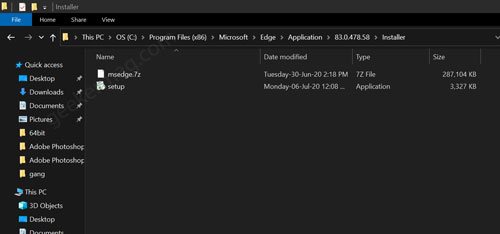

Things to Do Before Uninstalling Microsoft Edgeīefore uninstalling Microsoft Edge from your PC, there are some essential things to consider. However, we begin with the steps there are things you should do before uninstalling. If you want to remove Microsoft Edge from your device, this guide will help you. You may have switched to another web browser or faced issues with Edge, such as slow performance, crashes, or frequent errors. Now, why would someone want to delete Microsoft Edge from their device? There are several reasons for this. In this article, we will guide you on how to uninstall Microsoft Edge from Windows and Mac quickly and effortlessly. Click the Uninstall button again when you get the confirmation flyout to begin removing the Edge from Windows 10.Are you tired of having too many browsers on your device, or are you one of the many users who have recently tried out Microsoft Edge but decided it’s not for you? Whatever the reason, the process of removing Edge is straightforward. If the Uninstall button is greyed out, refer to the directions in Method 1 (scroll up to see). Click on the same to see the Uninstall button. Step 2: Look for the Microsoft Edge entry. Step 1: Go to Windows 10 Settings > Apps > Apps & features page. Method 2 of 2 Uninstall Chromium Edge via Settings in Windows 10 If you want to install the Edge browser again, you can do so by downloading its installer from Microsoft and then running the installer. To remove the legacy Edge, refer to our how to uninstall and remove Edge from Windows 10 guide. NOTE: On some versions of Windows 10, removing the Chromium-Edge will automatically restore the legacy Edge browser.

You will not see any other prompts or options on the screen. Setup.exe –uninstall –system-level –verbose-logging –force-uninstall

Step 7: Finally, execute the following command to force uninstall the Chromium-based Edge from Windows 10: Since you have already copied the path in Step 5, paste it in the Command Prompt. In the above command, replace “PathToEdge” with the actual path to the Installer folder of Edge. Step 6: In the Command Prompt, execute the following command: To do that, type CMD in the Start/taskbar search field, right-click on the Command Prompt entry in the search result, and then click Run as administrator option.Ĭlick the Yes button when you get the UAC prompt.

Step 5: Now, open the Command Prompt as administrator. Hold down the Shift key, right-click on the Installer folder and then click the Copy as path option to copy the path to the Installer folder. On your PC, the number might be different as you might be running a different version of Edge. In the picture above, 84.0.522.52 is the folder name. Step 3: In the Application folder, you will find a folder with the version number of the Edge currently installed.


 0 kommentar(er)
0 kommentar(er)
